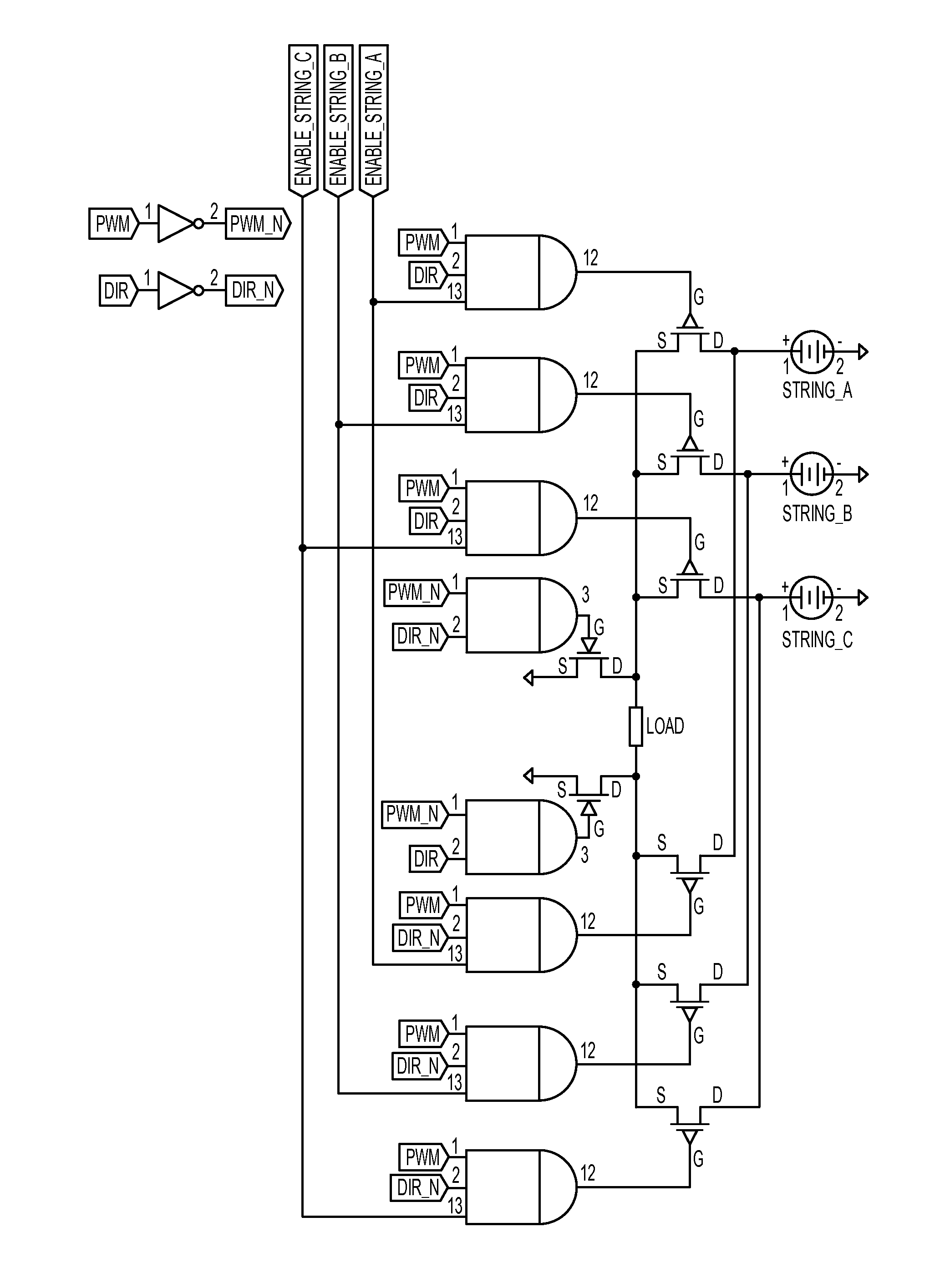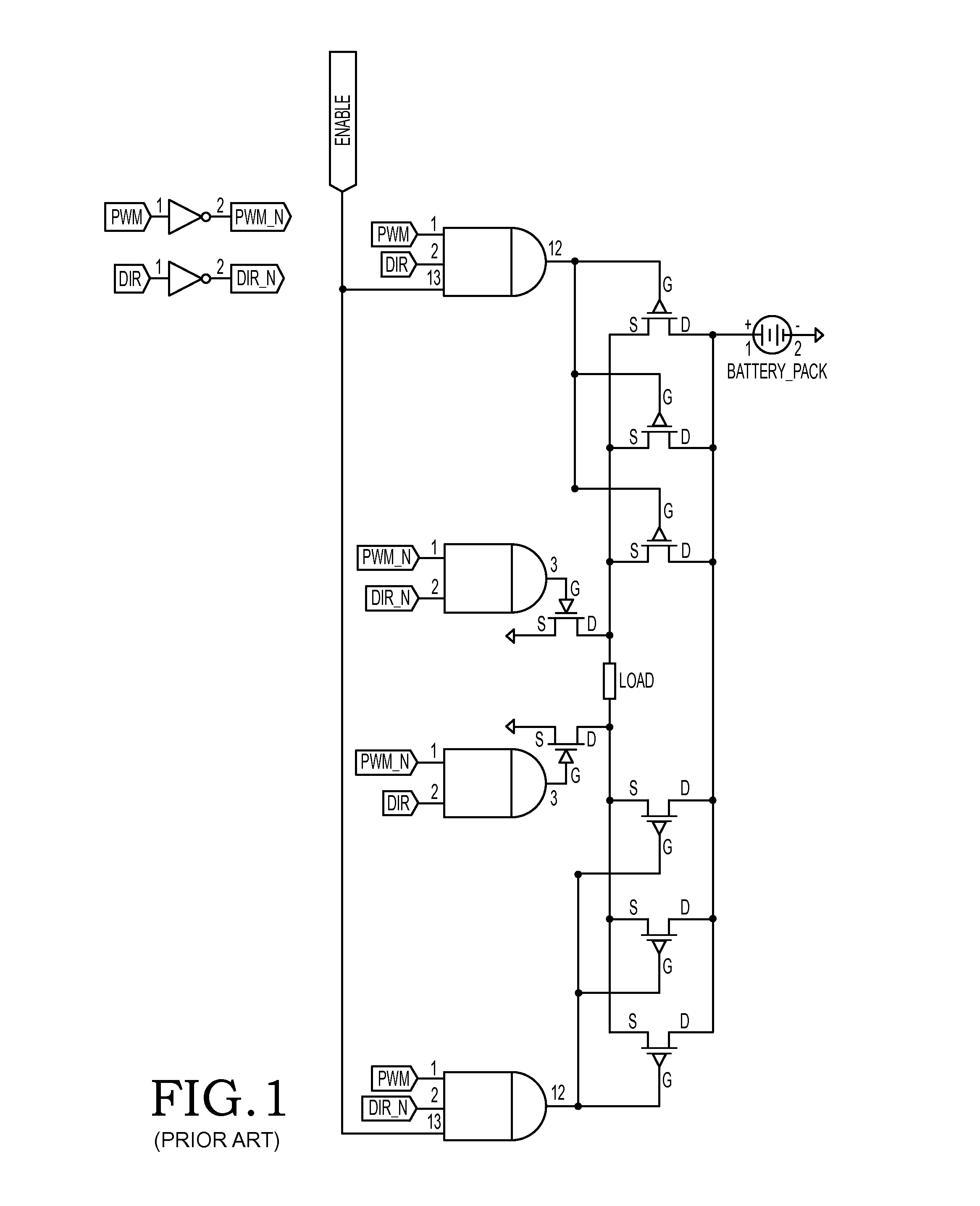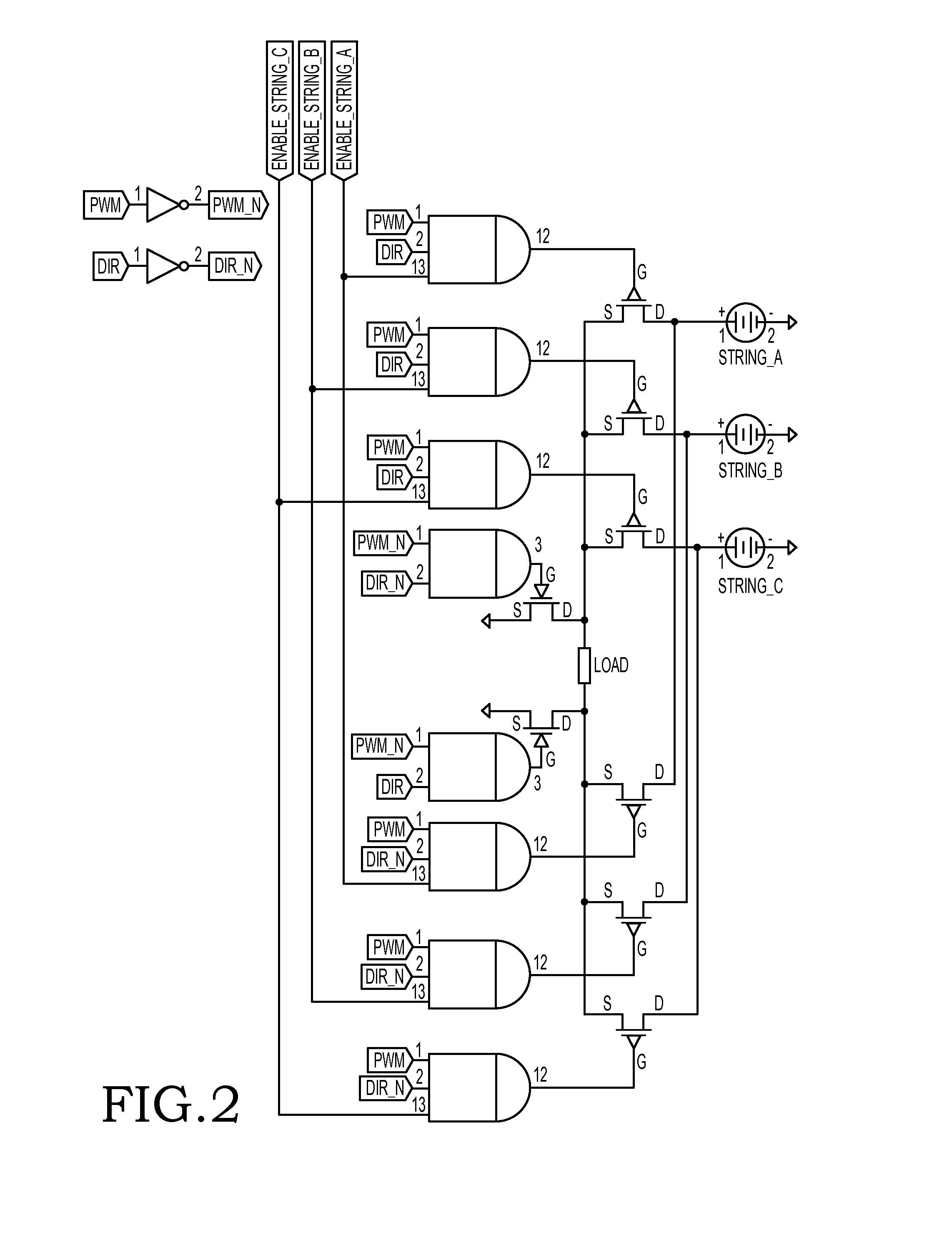Energy management system
a technology of energy management and energy management, applied in the direction of transportation and packaging, arrangement of several simultaneous batteries, dc source parallel operation, etc., can solve the problems of high cost and require an advanced controller, and achieve the effect of less complex
- Summary
- Abstract
- Description
- Claims
- Application Information
AI Technical Summary
Benefits of technology
Problems solved by technology
Method used
Image
Examples
first embodiment
[0026]FIG. 2 shows an energy management system with an energy storage that is divided into several battery strings, in this embodiment only three battery strings STRING_A, STRING_B and STRING_C are illustrated but it is naturally possible to have an arbitrary number of battery strings such as fifteen or more. Each battery string, e.g. STRING_A, is in this example connected to two power switches, each being connected to the opposite upper leg of an H-bridge converter. The power switches are controlled by control signals via AND-gates with three inputs. The control signals are similar compared to the prior art system disclosed in FIG. 1, but the ENABLE signal is replaced by separate enable signals for each string, e.g. ENABLE_STRING_A. Individual battery string control units (not shown) are arranged to monitor each battery string and to generate the enable signal for the respective string when appropriate (as discussed above).
[0027]The major advantage with the embodiment is that it is...
second embodiment
[0030]FIG. 3 shows an energy management system with integrated energy storage and a first type of DC / DC converter. The DC / DC converter is a buck converter, which has a fairly simple operation with an inductor, a diode, a capacitor and a switch. In this embodiment, the switch is realised as three parallel-connected power switches, each being connected to a battery string (or battery) and is controlled by two control signals through an AND-gate. An enable-signal controls which strings are connected to the buck converter, as illustrated by “String 1 Enable”, “String 2 Enable” and “String 3 Enable”, and the control signal PWM determines the DC voltage over the load.
[0031]Individual battery string control units (not shown) monitors the status of each battery string and generates the enable signal if the battery string is determined to be connected to the buck converter and thus the DC load.
third embodiment
[0032]FIG. 4 shows an energy management system with integrated energy storage and a second type of DC / DC converter. The DC / DC converter is an inverting power converter, which has a fairly simple operation with an inductor, a diode, a capacitor and a switch. In this embodiment, the switch is realised as three parallel-connected power switches, each being connected to a battery string (or battery) and is controlled by two control signals through an AND-gate. An enable-signal controls which strings are connected to the inverting power converter, as illustrated by “String 1 Enable”, “String 2 Enable” and “String 3 Enable”, and the control signal PWM determines the DC voltage over the load.
[0033]As mentioned above, individual battery string control units (not shown) monitors the status of each battery string and generates the enable signal if the battery string is determined to be connected to the inverting power converter and thus the DC load.
PUM
 Login to View More
Login to View More Abstract
Description
Claims
Application Information
 Login to View More
Login to View More - R&D
- Intellectual Property
- Life Sciences
- Materials
- Tech Scout
- Unparalleled Data Quality
- Higher Quality Content
- 60% Fewer Hallucinations
Browse by: Latest US Patents, China's latest patents, Technical Efficacy Thesaurus, Application Domain, Technology Topic, Popular Technical Reports.
© 2025 PatSnap. All rights reserved.Legal|Privacy policy|Modern Slavery Act Transparency Statement|Sitemap|About US| Contact US: help@patsnap.com



